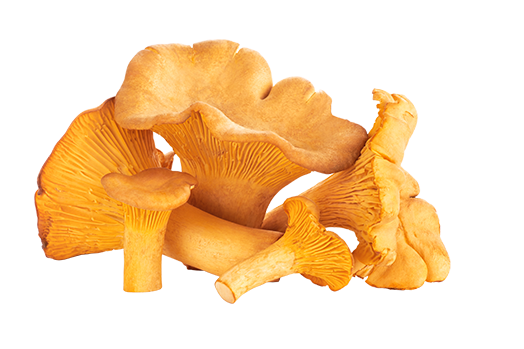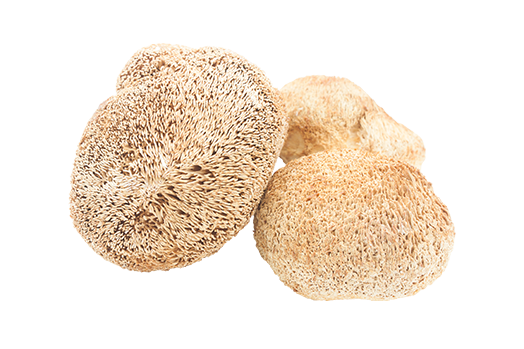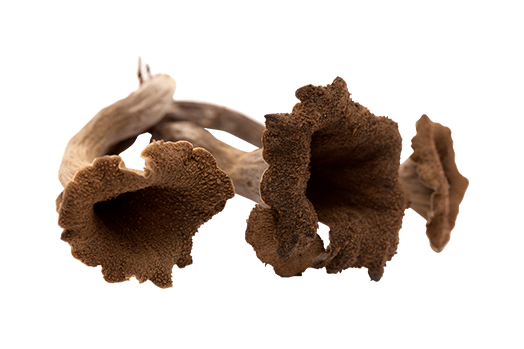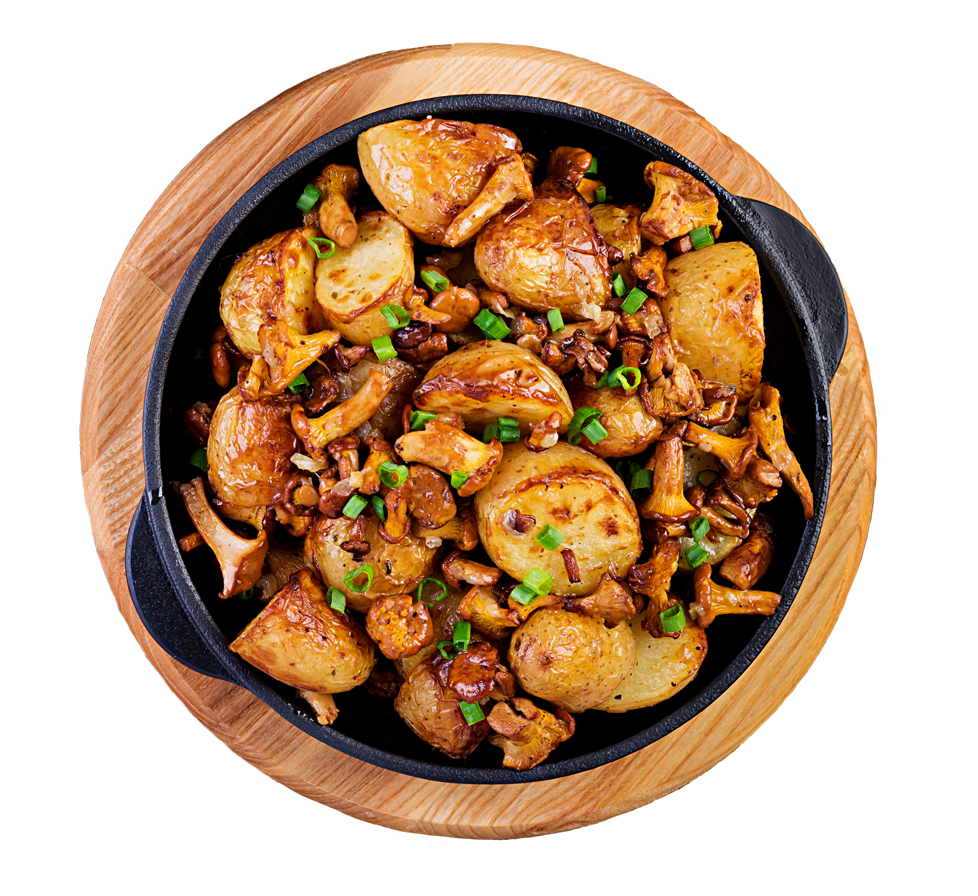Exotic Mushrooms

Chanterelle Mushrooms
Chanterelle mushrooms typically grow to 2-5 inches, and their yellow to orange color make them easy to identify. One of the most prolific mushrooms in Europe and North America with upwards of 40 varieties, they are commonly referred to as golden chanterelles. This exotic mushroom gives off an apricot-like aroma when harvested, and their nutty flavor makes them a culinary delight. It’s essential for mushroom lovers to select chanterelles from a reputable food resource because look-alikes, called false chanterelles, exist in the wild. Chanterelle mushrooms usually last up to 10 days when placed in a paper bag and stored in the refrigerator.
Lion’s Mane Mushrooms
Lion’s mane mushrooms are more than just a cool looking mushroom. Ranging in size from 2-7 inches in diameter they possess an irregular-shaped cap that is white and fluffy looking, reminiscent of a lion. The Latin name, Hericium erinaceus, means hedgehog, a common nickname for this mushroom. Highly regarded in traditional Chinese culture for its health benefits, lion’s mane mushrooms are a flavorful addition to your meals. Lion’s mane mushrooms are delicious when sautéed in butter with a variety of fresh herbs and garlic. They have a slightly chewy and tender texture that is similar to that of crab or lobster, making them a delicious addition to your seafood cakes, cream sauces, soups, and pasta dishes. To store lion’s mane mushrooms, loosely wrap them in paper towels and refrigerated for up to 2 weeks.


Black Trumpet Mushrooms
Considered one of the smaller varieties, black trumpet mushrooms range from 2-6 inches and can be identified by their vase-like shape and curled edges. Growing in small bunches, these brown, black, and gray mushrooms do not have gills under the caps like many others. Giving off a robust woodsy aroma, people generally gravitate to their modestly chewy texture, rich smoky flavor, and notes of black truffle when dried. Sometimes called the horn of plenty, they remain one of the more challenging varieties to cultivate. Often integrated into sautéed dishes, black trumpet mushrooms are best used fresh. When refrigerated in a paper bag, they keep for a couple of days.
Morel Mushrooms
Generally maturing to 1-3 inches, morel mushrooms are a fleeting springtime treat in the Midwest and West and have been a staple of French cuisine for many years. You can’t mistake its spongy, conical, honeycomb-shaped cap. Their color ranges from blonde to dark brown, and they rank among the more fragile varieties. Sometimes called the sponge mushroom, true morel, yellow morel, or common morel, they deliver an earthy, woodsy flavor and meaty texture that makes them an ideal choice for sautéing and frying, among other culinary applications. Ranking among the preferred mushroom in the U.S. by chefs in high-end restaurants, morel mushrooms may be paired with white wine and cheese, among others. When loose-wrapped in a paper bag, morel mushrooms keep for up to one week when refrigerated. Dried mushrooms may be frozen for upwards of one year.

Culinary
Applications

Exotic mushrooms enjoy wide-reaching applications in specialized cuisine and everyday meals. Considered delicacies by chefs in the world’s finest restaurants, everyday people also have access to many of these varieties. Unlike many of the common mushroom varieties, exotic mushrooms are usually reserved for upscale recipes and served alongside expensive cuts of meat or are the feature of vegetarian dishes.
The dishes that utilize exotic mushrooms include those that are difficult to perfect, such as risotto, rich sautés, and reductions. Exotic mushrooms can also be more difficult to cultivate domestically, making them a select food. The primary qualities that set exotic mushrooms apart from more common varieties are their uniqueness and scarcity.

